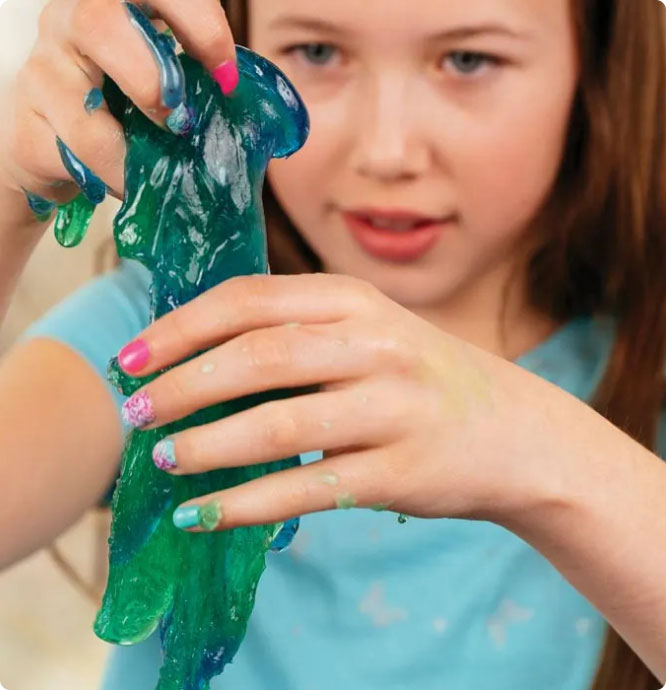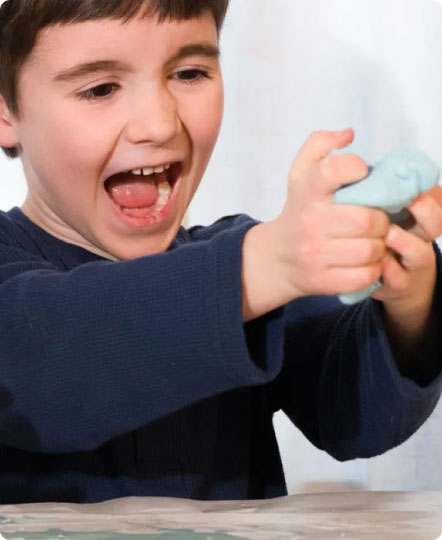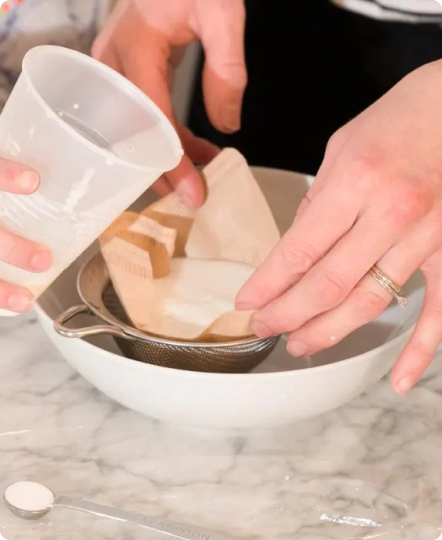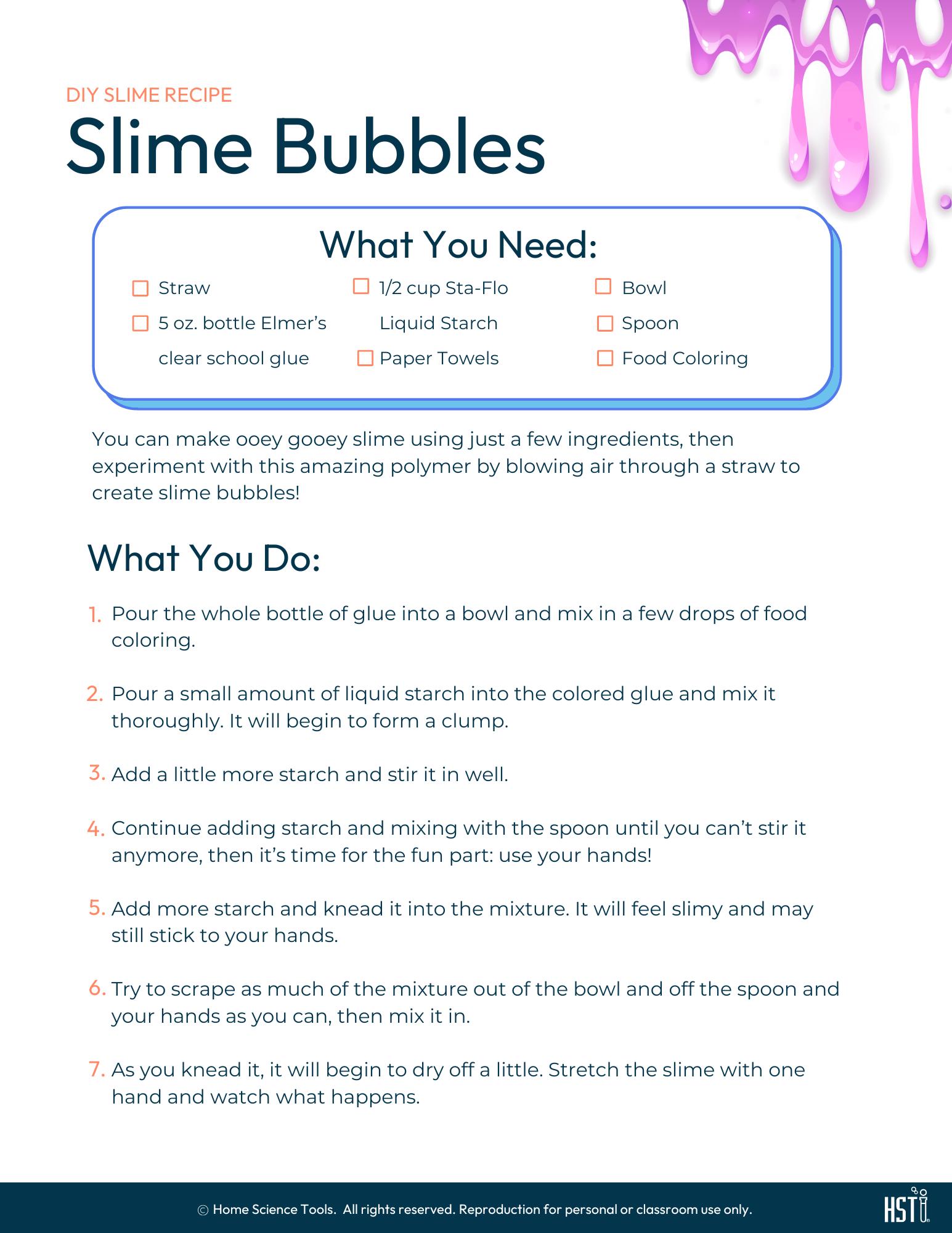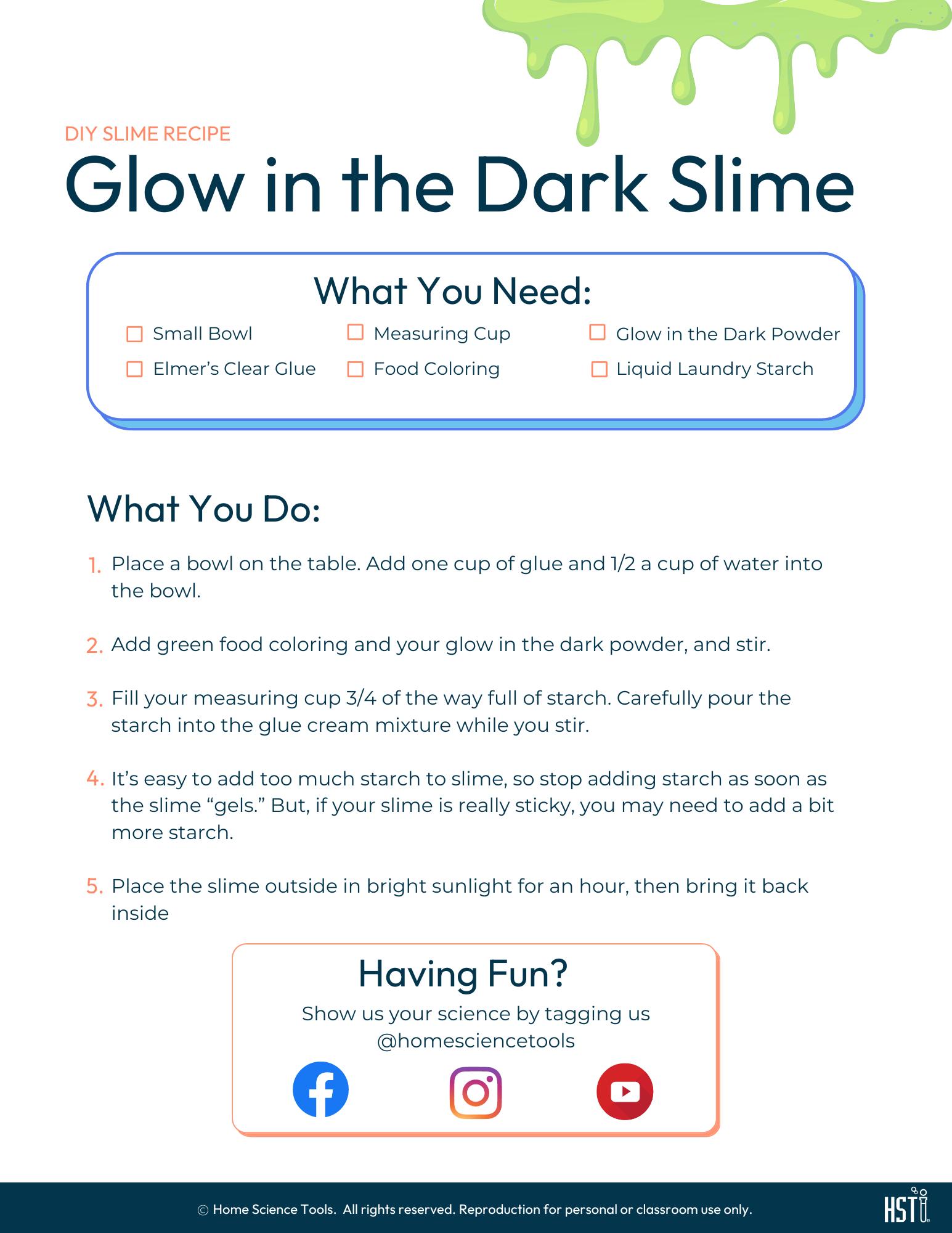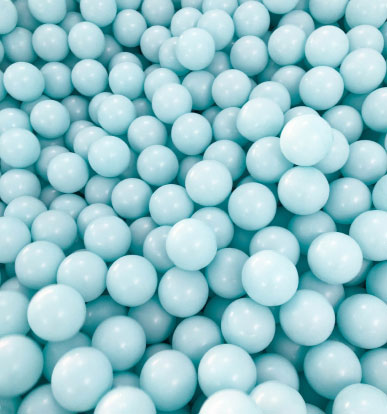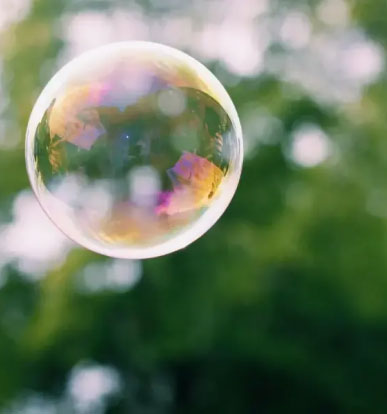Find four popular DIY slime recipes below! With these easy-to-do homemade slime recipes, kids can learn about valuable scientific principles while they create, play with, and explore four different kinds of slime. Scroll to discover how to make slime with borax, how to make slime without borax, how to make slime with only glue (and a few other household items), how to make slime without glue, and more!
The first easy slime recipe listed below will show you how to make slime with glue and how to make slime with borax. The second easy slime recipe is called “Super Slime,” and it will teach you how to make slime with borax but without glue. Finally, the Glooze and Oobleck slime recipes reveal how to make slime without borax AND without glue; instead, they use household ingredients, like skim milk and cornstarch, to transform into amazing, ooey-gooey substances. Whether you're looking for a slime recipe without borax or with it, a slime recipe with skim milk, or a slime recipe with cornstarch, we've got options for you!
Our hands-on Slime Recipe Kit for Kids is complete with all the slime ingredients you need — including lab-quality chemicals, containers, and instructions for making the first two types of slime listed below — Simple Slime (putty-like texture) and Super Slime (clear & gooey). To make Glooze (slimy & ooze-like) and Oobleck (resembles quicksand), simply add kitchen staples, like corn starch, skim milk, vinegar, and baking soda!
How to Make Simple Slime
- In one bowl mix 1 oz. glue (about 1⁄4 of the glue bottle) and 1⁄4 cup water. If you want colored slime, add food coloring to the glue and water mixture. Lift some of the solution out of the container with the stir stick and note what happens.
- Add 1⁄4 cup of liquid Sodium Tetraborate (Borax) Solution (find recipe below) to the glue and water mixture and stir slowly.
- The slime will begin to form immediately. Lift some of the solution with the stir stick and observe how the consistency has changed from Step 1.
- Stir as much as you can, then dig in and knead it with your hands until it gets less sticky. This is a messy experience but is necessary because it allows the two compounds to bond completely. Don’t worry about any leftover water in the bowl; just pour it out.
- When not in use, store the slime in a plastic bag in the fridge to keep it from growing mold.
How to Make Super Slime
- Pour ½ cup of the polyvinyl alcohol (PVA) solution into a beaker, jar, or bowl. If you want colored slime, add food coloring to the PVA solution and stir with a stir stick.
- Add 2 teaspoons of the Sodium Tetraborate (Borax) Solution into the PVA solution and stir slowly.
- Try lifting some of the solutions with the stir stick and note what happens. Once the slime has formed, you can play with it. Just don’t eat it!
- Your slime will last longer if you seal it in a plastic bag and keep it in the fridge, otherwise it will dry out or mold.
How to Make Glooze Slime
- Add 7 tablespoons of skim milk to a cup and add 1 tablespoon of vinegar to the milk. Gently stir the mixture until solids have formed.
- Let the solids sink to the bottom of the mixture and then drain off the liquid using a filter (a coffee filter works best). Let the solids drain for a few minutes.
- Add ¼ teaspoon of baking soda to the solids and knead together to form a slimy mixture from milk.
How to Make Oobleck Slime
- In the plastic mixing bowl, combine small amounts of water and cornstarch together to form a mixture that looks like heavy whipping cream and has the consistency of honey. The approximate ratio of the cornstarch to water mixture is 2 cups of cornstarch to 1 cup of water. So if you use all of a regular-sized box of cornstarch (about 16 oz.), you will use about 1½ cups of water. It is best to start with less water and slowly add it until the desired consistency is reached.
- After making your mixture, gently lay your hand on the surface of the cornstarch-water mixture. You should notice that your hand sinks in the mixture like you would expect it to do. Move your hand through the mixture, slowly first and then trying to move it really fast. Was it easier to move your hand slowly or quickly through it?
- If your mixture is deep enough to submerge your entire hand in it, try grabbing a handful of the mixture and pulling your hand out quickly. Then try again, this time relaxing your hand and pulling it out slowly. Did you notice a difference?
- Try punching the cornstarch-water mixture. (Be careful not to hurt yourself on the bowl!) Make sure to hit the substance hard and pull your fist back quickly. Did the substance splatter everywhere or did it remain in the bowl? (If it splattered, add more cornstarch.)
- Whenever you gently and slowly move your hand through the cornstarch-water mixture, it behaves like a liquid. But when you try to move your hand through it quickly or forcefully hit the substance, it behaves like a solid. This cornstarch-water mixture behaves similarly to quicksand.


